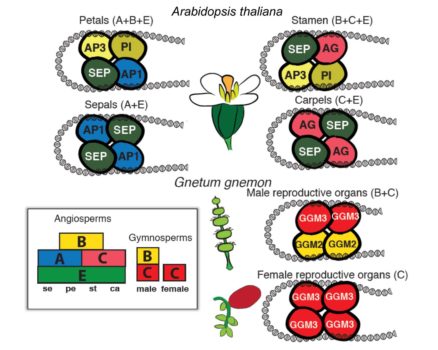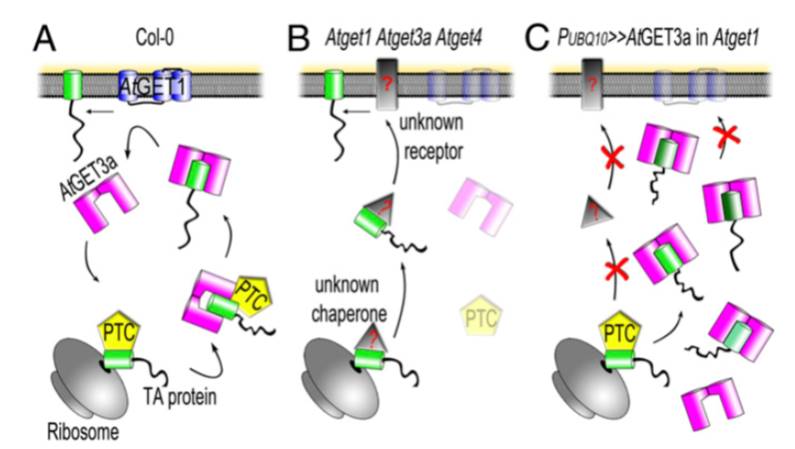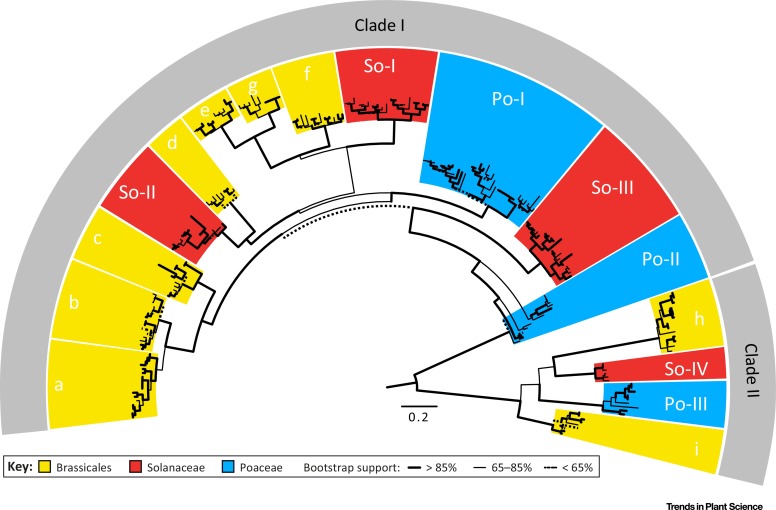
Loose-Knit Family: Tracing the Evolution of Actin Depolymerizing Factors that Sever or Join the Actin Cytoskeleton
Research, The Plant Cell, The Plant Cell: In Brief0 Comments
/
IN BRIEF by Jennifer Lockhart jlockhart@aspb.org
The interior of a plant cell is supported by the actin cytoskeleton, a complex network of yarn-like fibers whose form changes as the cell develops, grows, and divides. Actin fibers readily come apart (sever) and join back together, depending on the…

The origin of floral identity quartets
Plant Science Research Weekly, ResearchWhere do flowers come from? Their sudden appearance and rapid radiation was described as an “abominable mystery” by Charles Darwin. Ruelens et al. examine the genetic toolkit that underpins reproductive organ formation in gymnosperms to uncover the origins of flowers (which they pragmatically describe…

Review: Dark signaling in plants ($)
Plant Science Research Weekly, ResearchPlants use light as a source of energy and information; however, they are also sensitive and respond to light/dark diurnal cycling, with many processes happening during the dark phase of the diurnal cycle. In this review, Seluzicki et al. emphasize the importance of studying and understanding what…

Review: The sexual advantage of looking, smelling and tasting good, the metabolic network that produces signals for pollinators ($)
Plant Science Research Weekly, ResearchThe interaction between angiosperms and their pollinators provides an excellent system to study co-evolution, and underpins the evolution of the biosynthesis of numerous interesting and useful specialized metabolites, from pigments to fragrances. Borghi et al. review the metabolic pathways that produce…

GET with it: Targeting of tail-anchored proteins via the GET system
Plant Science Research Weekly, ResearchStudents learn that membrane proteins are inserted into the endoplasmic-reticulum (ER) membrane co-translationally, but this mechanism does not hold for so-called tail-anchored (TA) proteins which carry a single C-terminal membrane spanning domain and insert into the ER membrane post-translationally.…

Opinion: ATG8 expansion as a driver of selective diversification of autophagy? ($)
Plant Science Research Weekly, ResearchAutophagy is a process of selective membrane trafficking that delivers cargo to the vacuole or plasma membrane for recycling or secretion. ATG8 is a small ubiquitin-like protein that is required for formation of the double-membrane enclosed autophagy vesicle, the autophagosome. The ATG8 gene family has…

Early origins of diversification in the Solanaceae family ($)
Plant Science Research Weekly, ResearchThe Solanaceae family is, nowadays, one of the most valuable for humankind as it contains several economically important crops as potato, tobacco, tomatoes, etc. However, fossil records that help as understand how and where this family has evolved are elusive. In this paper, Wilf et al. walk us through…

Gain and loss of floral scent with shifts in pollination strategies
Plant Science Research Weekly, ResearchTwo papers in Current Biology examine the genetics behind plant-pollinator interactions , focusing on genes controlling floral scent. Amrad et al. 10.1016/j.cub.2016.10.023 explore differences between bee, hawkmoth and hummingbird pollinated species of Petunia. They identify changes in expression in…

Sub-Antarctic plants warm up themselves
Plant Science Research Weekly, ResearchHigh latitude and altitude plants experience short growing seasons, consistent low temperatures, windy environments and unpredictable sunny spots. These plants are usually small and rely on self-pollination, but in Campbell, a Sub-Antarctic island, there are gardens of megaherbs that defy the predictions…

